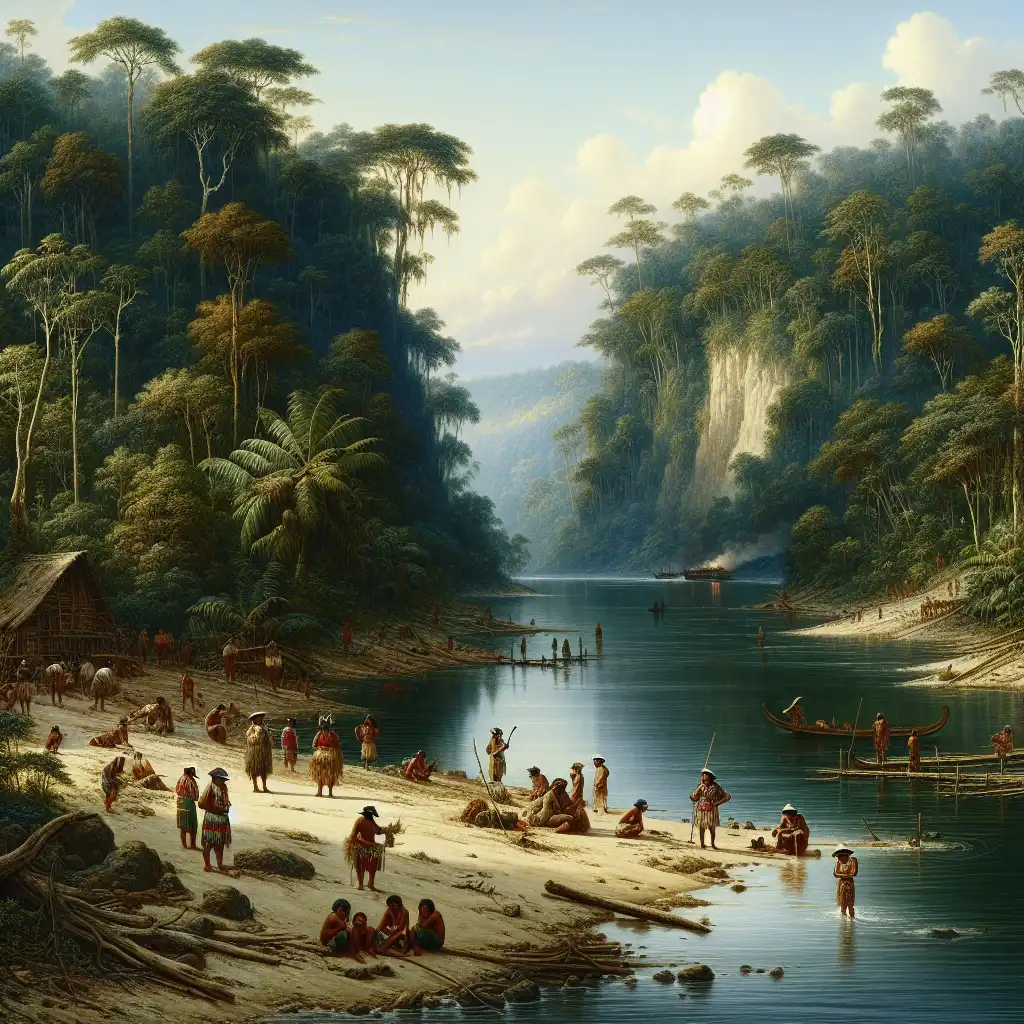Rare Images of the Mashco Piro Tribe Surface: Uncovering the Plight of an Uncontacted Indigenous Group
In a groundbreaking revelation, Survival International has released rare images of the Mashco Piro, an elusive indigenous tribe residing in the remote Peruvian Amazon. These images, published on Tuesday, capture dozens of tribe members along the banks of a river near logging concessions, shedding light on their increasingly precarious existence.
The Mashco Piro: An Elusive Tribe in Peril
The Mashco Piro, known for their reclusive nature, have been observed emerging from the dense rainforest more frequently in recent weeks. This growing visibility is attributed to their search for food and a need to distance themselves from the invasive presence of logging operations. According to FENAMAD, a local indigenous rights group, this movement is a direct response to the encroachment by loggers.
Sightings Near the Madre de Dios Region
Photographs taken at the end of June depict the Mashco Piro along a riverbank in the Madre de Dios region, located in southeastern Peru close to the Brazilian border. Caroline Pearce, director of Survival International, emphasized the significance of these images. “These incredible images show that a large number of isolated Mashco Piro live alone a few kilometers from where the loggers are about to start their operations,” Pearce stated.
Increased Encounters with Nearby Villages
In recent days, over 50 Mashco Piro individuals have been sighted near the Yine village of Monte Salvado. Additionally, a smaller group of 17 Mashco Piro appeared near the village of Puerto Nuevo, as reported by the NGO dedicated to defending indigenous rights. Historically, the Mashco Piro have maintained minimal contact with the Yine or any other groups, living in seclusion within an area nestled between two natural reserves in Madre de Dios.
The Impact of Logging on the Mashco Piro
The territory inhabited by the Mashco Piro is under significant threat from logging companies that hold timber concessions within the region. One prominent company, Canales Tahuamanu, has constructed over 200 kilometers (124 miles) of roads to facilitate the extraction of timber, according to Survival International.
The Role of Canales Tahuamanu
Canales Tahuamanu holds certification from the Forest Stewardship Council and manages 53,000 hectares (131,000 acres) of forests in Madre de Dios for the extraction of valuable timber species such as cedar and mahogany. Despite requests for comment, a representative from Canales Tahuamanu in Lima did not respond.
Government and International Responses
On June 28, the Peruvian government reported sightings of the Mashco Piro along the Las Piedras river, situated 150 kilometers (93 miles) from Puerto Maldonado, the capital of Madre de Dios. These sightings have not been confined to Peru; the Mashco Piro have also been observed across the border in Brazil. Rosa Padilha, from the Brazilian Catholic bishops’ Indigenous Missionary Council in Acre, noted, “They flee from loggers on the Peruvian side. At this time of the year, they appear on the beaches to take tracajá (Amazon turtle) eggs. That’s when we find their footprints on the sand. They leave behind a lot of turtle shells.”
The Plight of the Mashco Piro: A Life on the Run
The Mashco Piro’s existence is marked by a constant state of unrest, as they are perpetually on the move to evade loggers and other threats. Padilha poignantly remarked, “They are a people with no peace, restless, because they are always on the run.”
Environmental and Social Challenges
The Mashco Piro face numerous challenges that threaten their survival, including environmental degradation, loss of habitat, and the depletion of natural resources due to logging activities. Their traditional way of life is under siege, forcing them into increasingly vulnerable positions.
Efforts to Protect the Mashco Piro
Various organizations, including Survival International and FENAMAD, are advocating for the protection of the Mashco Piro and other uncontacted tribes. These efforts aim to safeguard their territories from further encroachment and to ensure their rights are respected.
FAQs About the Mashco Piro Tribe
Who are the Mashco Piro?
The Mashco Piro are an uncontacted indigenous tribe living in the remote Peruvian Amazon, known for their reclusive nature and minimal interaction with the outside world.
Why are the Mashco Piro coming out of the rainforest?
The Mashco Piro have been emerging from the rainforest more frequently in search of food and to distance themselves from the increasing presence of logging operations in their territory.
Where have the Mashco Piro been sighted recently?
Recent sightings of the Mashco Piro have occurred along the banks of a river in the Madre de Dios region in southeastern Peru, near the Brazilian border. They have also been observed near villages such as Monte Salvado and Puerto Nuevo.
What threats do the Mashco Piro face from logging companies?
Logging companies hold timber concessions within the Mashco Piro’s territory, leading to habitat destruction, resource depletion, and increased vulnerability for the tribe. Roads constructed for logging trucks further encroach upon their land.
What actions are being taken to protect the Mashco Piro?
Organizations like Survival International and FENAMAD are advocating for the protection of the Mashco Piro by raising awareness, pushing for legal safeguards, and working to prevent further encroachment on their territory.
Conclusion
The rare images of the Mashco Piro tribe serve as a poignant reminder of the challenges faced by uncontacted indigenous groups in the Amazon. As logging operations continue to encroach upon their territory, the Mashco Piro are increasingly forced to leave their secluded existence in search of safety and sustenance. The efforts of organizations dedicated to their protection are crucial in ensuring that the Mashco Piro, and other tribes like them, can continue to exist in peace, preserving their unique way of life for future generations.
















